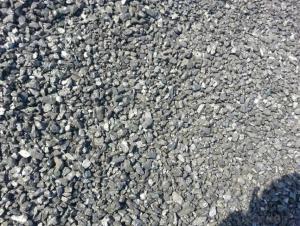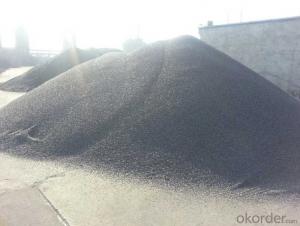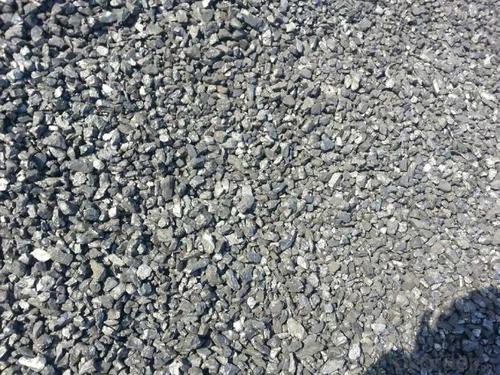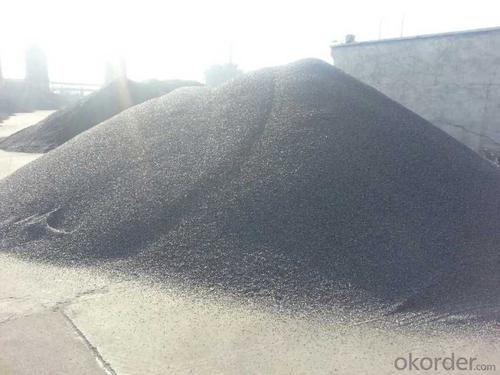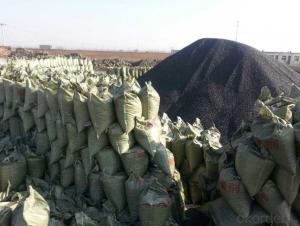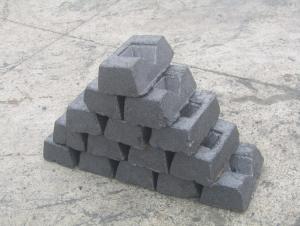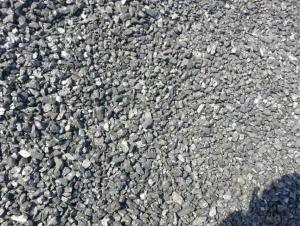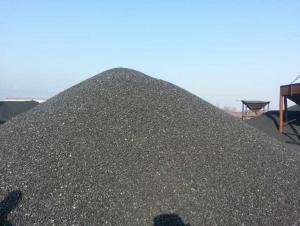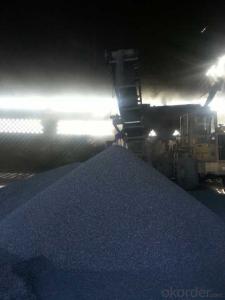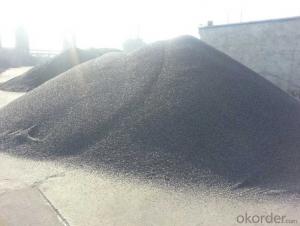Injection carbon FC90 with high and stable quality
- Loading Port:
- Tianjin
- Payment Terms:
- TT OR LC
- Min Order Qty:
- 20 m.t.
- Supply Capability:
- 3000 m.t./month
OKorder Service Pledge
OKorder Financial Service
You Might Also Like
Packaging & Delivery
25kgs/50kgs/1ton per bag or as buyer's request
Specifications
Calcined Anthracite
Fixed carbon: 90%-95%
S: 0.5% max
Size: 0-3. 3-5.3-15 or as request
It used the high quality anthracite as raw materials through high temperature calcined at over 2000 by the DC electric calciner with results in eliminating the moisture and volatile matter from anthracite efficiently, improving the density and the electric conductivity and strengthening the mechanical strength and anti-oxidation. It has good characteristics with low ash, low resistvity, low sulphur, high carbon and high density. It is the best material for high quality carbon products.
Advantage and competitive of caclined anthracite:
1. strong supply capability
2. fast transportation
3. lower and reasonable price for your reference
4.low sulphur, low ash
5.fixed carbon:95% -90%
6..sulphur:lower than 0.3%
General Specification of Calcined Anthracite:
| FC | 95 | 94 | 93 | 92 | 90 |
| ASH | 4 | 5 | 6 | 6.5 | 8.5 |
| V.M. | 1 | 1 | 1 | 1.5 | 1.5 |
| S | 0.3 | 0.3 | 0.3 | 0.35 | 0.35 |
| MOISTURE | 0.5 | 0.5 | 0.5 | 0.5 | 0.5 |
Pictures
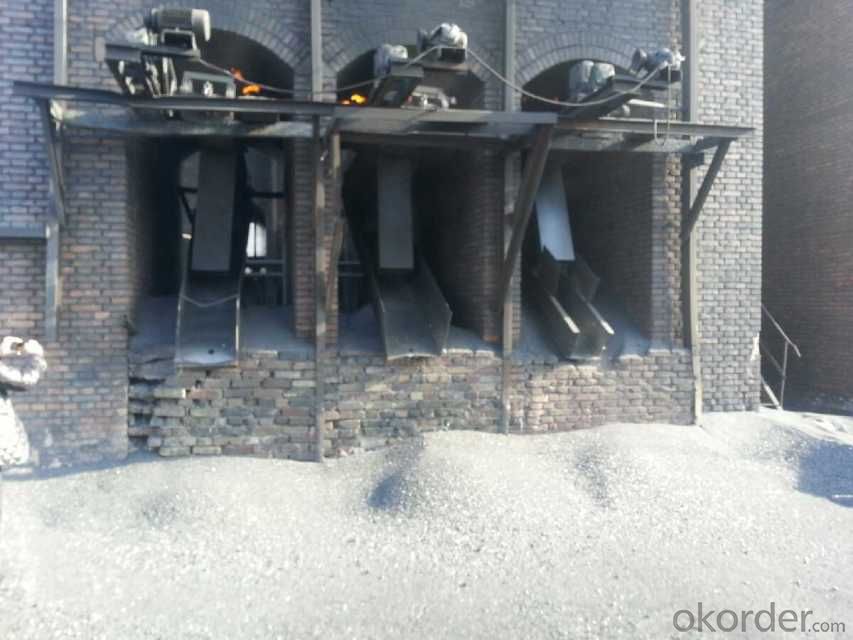
- Q: How many points can Yongan change for 1 carbon coins?
- Yongan APP one hundred carbon points, change a carbon coin
- Q: Method for making carbon fiber board
- Carbon fiber sheet is a carbon fiber heating paper, which is insulated and protected by epoxy resin.
- Q: What are the consequences of increased carbon emissions on coastal regions?
- Increased carbon emissions have significant consequences on coastal regions. One of the most notable impacts is sea-level rise, caused by the warming of the planet and the subsequent melting of glaciers and ice sheets. This rise in sea levels can lead to coastal erosion, flooding, and the loss of coastal habitats. Additionally, carbon emissions contribute to ocean acidification, which harms marine life and coral reefs. The combination of these effects poses a threat to coastal communities, economies, and ecosystems, highlighting the urgent need for global action to reduce carbon emissions and mitigate the consequences.
- Q: How does carbon impact biodiversity?
- Carbon impacts biodiversity in several ways. Firstly, carbon dioxide is a greenhouse gas that contributes to climate change, leading to shifts in temperature and precipitation patterns. These changes can disrupt ecosystems and alter habitats, affecting the distribution and survival of various species. Additionally, excess carbon in the atmosphere can lead to ocean acidification, which negatively affects marine biodiversity by harming coral reefs and other organisms reliant on calcium carbonate structures. Finally, deforestation and land-use changes associated with carbon emissions result in habitat loss, further reducing biodiversity. Overall, carbon emissions have significant and detrimental impacts on the delicate balance of ecosystems and the diversity of life on Earth.
- Q: How is carbon used in the production of paints and pigments?
- Carbon is used in the production of paints and pigments primarily as a black pigment. Carbon black, which is derived from the incomplete combustion of hydrocarbons, is mixed with binders to create black paints and pigments. It provides excellent opacity, color retention, and UV resistance, making it a popular choice in various applications, including automotive coatings, printing inks, and architectural paints.
- Q: How is carbon used in the production of adhesives?
- Carbon is used in the production of adhesives in several ways. One common method involves the use of carbon black, which is a fine powder made from the incomplete combustion of hydrocarbon fuels. Carbon black is added to adhesives to improve their strength, durability, and resistance to UV radiation. It acts as a reinforcing agent, increasing the adhesion and cohesion properties of the adhesive. Additionally, carbon fibers are sometimes incorporated into adhesives to further enhance their strength and mechanical properties. These fibers are made by heating and stretching synthetic fibers or natural materials like rayon or petroleum pitch. When added to adhesives, carbon fibers provide increased tensile strength and stiffness, making them ideal for applications that require high-performance adhesives. Moreover, carbon-based polymers, such as epoxies and polyesters, are widely used in adhesive formulations. These polymers are created through chemical reactions involving carbon-based monomers. They offer excellent bonding properties, high resistance to heat and chemicals, and can be tailored to specific application requirements. Furthermore, carbon-based resins can be modified with other additives and fillers to achieve specific characteristics, such as flexibility, impact resistance, or flame retardancy. In summary, carbon is utilized in the production of adhesives through the incorporation of carbon black, carbon fibers, and carbon-based polymers. These materials significantly enhance the strength, durability, and other properties of adhesives, making them suitable for a wide range of applications in industries such as automotive, construction, electronics, and aerospace.
- Q: How does carbon dioxide affect ocean acidity?
- Carbon dioxide affects ocean acidity by increasing the concentration of carbonic acid in the water. When carbon dioxide dissolves in seawater, it reacts with water molecules to form carbonic acid, which then dissociates into hydrogen ions and bicarbonate ions. The increase in hydrogen ions leads to a decrease in pH, making the ocean more acidic. This process is known as ocean acidification and can have harmful effects on marine life, particularly on organisms with calcium carbonate shells or skeletons, as the increased acidity can make it harder for them to build and maintain their structures.
- Q: What is the role of carbon in the human body?
- Carbon plays a critical role in the human body as it is the basic building block of organic compounds. It forms the backbone of essential molecules like proteins, carbohydrates, lipids, and nucleic acids, which are vital for various biological processes. Additionally, carbon helps regulate energy metabolism, aids in cellular respiration, and is involved in the synthesis of hormones and neurotransmitters. Overall, carbon is essential for the structure, function, and overall health of the human body.
- Q: Who can explain that bare feet on fire carbon don't burn feet?
- First coated with Yunnan Baiyao to run, injury probability can be greatly reduced, we have such a custom inside the village, and then those children have to paint up and run, generally nothing
- Q: How is carbon used in the production of fuels?
- Carbon is a critical element in the production of fuels, as it is the main component of fossil fuels such as coal, oil, and natural gas. These fuels are formed from the organic remains of plants and animals that lived millions of years ago. The process of carbonization or carbonization involves subjecting these organic materials to high pressure and temperature over a long period, which transforms them into hydrocarbon-rich substances. Coal, for example, is primarily composed of carbon, along with small amounts of other elements. When coal is burned, this carbon reacts with oxygen, releasing energy in the form of heat. This heat can then be utilized to produce steam, which drives turbines to generate electricity or to power engines in various industries. Similarly, oil and natural gas, which are also predominantly composed of carbon, are extracted from underground reservoirs. These hydrocarbons can be processed through refining to produce various types of fuels, such as gasoline, diesel, and jet fuel. The combustion of these fuels in engines or power plants allows for energy release, enabling transportation and the generation of electricity. In addition to fossil fuels, carbon is also used in the production of alternative fuels like biofuels. Biofuels are produced from renewable sources such as plants, algae, or agricultural waste. The carbon contained in these organic materials can be converted into ethanol or biodiesel through processes like fermentation or transesterification, respectively. These biofuels can then be used as substitutes for conventional fossil fuels, reducing greenhouse gas emissions and dependence on non-renewable resources. Overall, carbon is an essential component in the production of fuels, whether derived from fossil fuels or renewable sources. Its combustion releases energy, which is harnessed for various purposes, including electricity generation, transportation, and industrial processes. However, it is important to explore and adopt sustainable alternatives to fossil fuels, such as biofuels and renewable energy sources, to mitigate the negative environmental impacts associated with carbon emissions.
Send your message to us
Injection carbon FC90 with high and stable quality
- Loading Port:
- Tianjin
- Payment Terms:
- TT OR LC
- Min Order Qty:
- 20 m.t.
- Supply Capability:
- 3000 m.t./month
OKorder Service Pledge
OKorder Financial Service
Similar products
Hot products
Hot Searches
